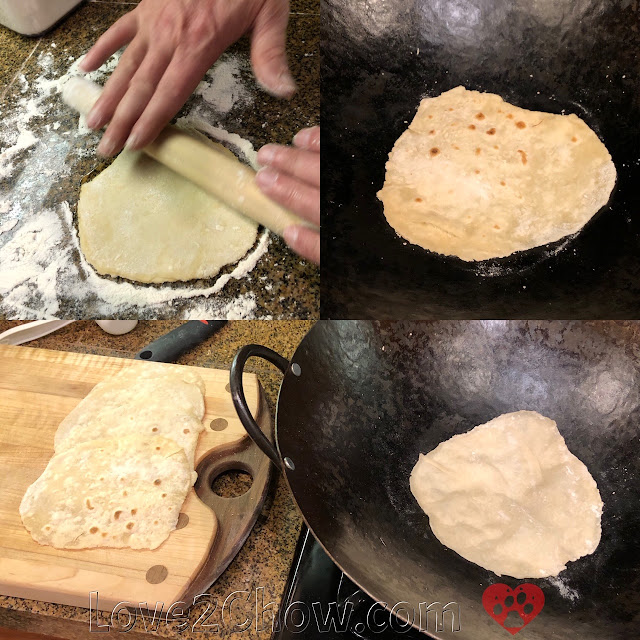Wok with me: Mu Shu Pork 木須肉 with homemade Mandarin pancakes 薄饼
Slivers of pork stir-fried with two kinds of dried mushrooms, cabbage and a mix of green and gold strands, wrapped in paper thin pancakes with a glossy, rich sweet and savory sauce... One of our favorite Chinese dishes mu shu, moo shu or moo shoo pork 木須肉 is made simple in Grace Young's The Breath of a Wok, down to the translucent pancakes of Peking duck fame, which are surprisingly easy to make using only two ingredients!
Each month, the 3000+ members of the Wok Wednesdays Facebook group cook two new dishes from the award-winning cookbook The Breath of a Wok. We share our photos, thoughts and suggestions for great camaraderie and a chance to win some fabulous cooking prizes. Without this group, I would never have discovered that I actually like tofu, nor would I have sought out a hand-hammered pow wok to recreate a favorite childhood dish using traditional cookware. I would have never had the confidence to make har gow 蝦餃, those beautiful and delicious shrimp dumplings wrapped in translucent rice flour, that grace the carts pushed around Cantonese dim sum 點心 restaurants. These little bites really do "dot or touch the heart," although "order as your heart desires" may be a more accurate translation for these small, à la carte dishes.
Mu shu pork was introduced to Chinese-American restaurants when I was less than 5 years old. I have always loved rubbing the rich brown sauce on paper thin pancakes that are wrapped around the stir-fry before being consumed like tiny burritos. Because dried wood ears and day lily buds were not readily available, the most typical restaurant version uses scrambled eggs or strips of yellow omelet, green cabbage, carrots, button mushrooms, scallions and sometimes bean sprouts. The dish is healthy, delicious and maintains the colorful strips of yellow amidst shades of green and brown.
The thin, white pancakes were usually the limiting factor, as most restaurants only offered four of these delicate wrappers, usually folded into quarters. Called 薄饼 (báo bǐng) (薄饼), or literally "thin pancakes" these wrappers are also served to wrap a bit of Peking duck, crispy duck skin, and raw scallion for a truly heavenly bite! With their thin, translucent nature, I had always assumed they would be too hard to make.
 |
| Homemade Mandarin pancakes, separated. |
Virginia Yee's moo shoo pork with mandarin pancake
 |
| Left to right: dried wood ear fungus, dried shiitakes or winter mushrooms, dried lily buds or golden needles |
 |
| All ingredients rehydrated and sliced into slivers. Mushroom soaking water reserved for making the sauce. The slicing and sauce making took 35 minutes. |
After turning off the heat and garnishing with scallions, we wrapped the stir-fry in the pancakes with a bit of Lee Kum Kee hoisin sauce, diluted with one or two spoonfuls of water until it spreads easily. Delicious!!
 |
| Wrapping the mu shu pork with a bit of diluted hoisin sauce. Note that the pancake is so thin you can see the edge of the plate through it. |
🐾 Don't substitute flour tortillas without checking the ingredients to make sure they have not used any hydrogenated fats (e.g. shortening). Shortening and margarine are among the worse ingredients for heart health, and once eaten will stay in your body continuing to harm it. Through a legal loophole, companies can claim 0 g trans fat simply by reducing their listed serving size so that a single serving has less than 500 mg of trans fat. Read the ingredient list and avoid the words hydrogenated, shortening or margarine.
Trader Joe has a nice white or whole wheat tortilla using sunflower oil. We also try to avoid palm oils for environmental reasons. The sesame oil in the Mandarin pancake recipe adds a rich, nutty flavor, and is great drizzled onto foods.
https://www.love2chow.com/2020/01/wok-with-me-mu-shu-pork-with-homemade.html

















1 comments
Wonderful Post Charleen! Great job!
ReplyDelete